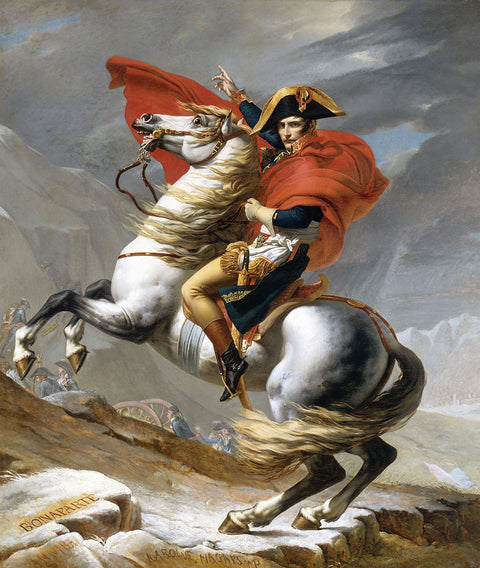
Precision vs. Propaganda: Some Painters Meticulously Researched Their Masterworks — Others Not So Much
The earliest depictions of war served one purpose: to emphasize the invincible might of the leaders who commissioned them. A stroke of accuracy might be useful toward establishing credibility, but only so long as it served the warlord’s purposes. Pharaoh Ramses II, for example, employed what amounted to a private propaganda bureau to back up his claims to godhood. Witness Egyptian depictions of his 1274 bc victory at Kadesh. His Hittite opponents commemorated it as their victory, though in reality it ended in an inconclusive standoff. Over the subsequent millennia war artists have wrestled with the matter of balancing accuracy and the lionization of their subject, who was very often the supporting patron.
However effective a depiction of battle may be in its own time, posterity often brings out the nitpickers. Often even the most well-meaning attempts at accuracy miss something. Just as often errors, accidental or deliberate, can be glaring. In any case, the advocates of historicity have their own leg to stand on in their conviction that a true act of valor can and should stand on its own merits.
This story appeared in the 2023 Summer issue of Military History magazine.
One of French First Consul Napoléon Bonaparte’s
military coups was his spring 1800 crossing of the Alps to surprise the
Austrians in Italy. In 1850 Paul Delaroche, aided by Adolphe Thiers’ 1845
account of the crossing, depicted a sensible, if not terribly heroic, Napoléon
picking his way through Great St. Bernard Pass on a sure-footed mule
appropriated from a convent at Martigny and led by a local guide.
Contemporaries critiqued Delaroche’s realistic approach for having failed to
capture its subject’s spirit. Ironically, he ended up selling a smaller copy
of the painting to Queen Victoria of Britain, who presented it to husband
Prince Albert on his birthday, Aug. 26, 1853.
Between
1801 and ’05 one of the future emperor’s most devoted admirers and
propagandists, Jacques-Louis David, painted five versions of the crossing, all
showing Napoléon atop a rearing charger behind an outcrop carved with his name
and those of his illustrious martial predecessors Hannibal and Charlemagne.
German muralist Wilhelm von Kaulbach’s
epic 1868 canvas The Naval Battle of Salamis reflects a recurring problem
whenever artists weigh accuracy against epic—namely, fitting everyone into the
available space. Painted for display in Munich’s palatial Maximilianeum, his
depiction of the 480 bc clash squeezes in Themistocles, Xerxes, Artemisia of
Caria and even a few Greek gods. “The Sea Battle of Salamis 480 BC”. Painting,
1862/64, by Wilhelm von Kaulbach (1804–1874). Oil on canvas, approx. 5 × 9m.
Munich, Maximilianeum Collection.
Similarly, in his
1849 painting The Conquest of the Teocalli Temple by Cortés and His Troops
(Aztec Temple in Tenochtitlan, 1520) German-American painter Emanuel Leutze
had many points to make, historicity being beside the point.
In his 1770
work The Death of Wolfe Benjamin West depicts mortally wounded British Maj.
Gen. James Wolfe achieving martyrdom as he learns of his victory at Quebec.
Joining Wolfe’s nattily dressed officers is a contemplative British-allied
Indian, though none were present.
Rendered in 1851, Leutze’s iconic
Washington Crossing the Delaware, with its all-inclusive crew of Continentals
and Patriot volunteers setting out to attack the Hessians at Trenton, N.J., on
the morning of Dec. 26, 1775, transcended several egregious errors. For
example, there was no Stars and Stripes flag until June 1777; the crossing was
made around midnight amid a snowstorm over a narrower stretch of river; and
General George Washington’s men crossed in larger, flat-bottomed Durham boats.
this article first appeared in Military History magazine
Painted for the U.S. Navy in 1962,
Vladimir Zveg’s Battle of the Virginia Capes, 5 September 1781 is forced by
space constraints to close the combatant ships to point-blank range. Another
gaffe is the Union Jack, whose red Cross of St. Patrick was not added until
1801.
Henry Arthur McArdle was obsessed with the
March 6, 1836, Battle of the Alamo and tried to have things both
ways—capturing the fight down to the most minute detail, but succumbing to the
urge to glorify the Texians’ last stand. The artist’s 1905 Dawn at the Alamo
depicts Jim Bowie (at left with knife in hand, though he was bedridden at the
time) battling Mexican troops alongside David Crockett (in shirtsleeves at
right) and William Barret Travis (larger than life atop the battlements).
Few battles have been
so widely painted as George Armstrong Custer’s Last Stand at the Little
Bighorn (known by American Indian victors as the Greasy Grass), but only in
recent years have reasonable renditions emerged. Painted the year of the
battle, Feodor Fuchs’ version includes such hokum as a fight on horseback (the
soldiers were dismounted), the use of sabers (not taken) and Custer’s fancy
dress jacket (vs. buckskin).
This Ethiopian depiction of the March 1,
1896, Battle of Adwa—the first decisive African victory over a European power
in the 19th century—lacks perspective and depicts a set-piece battle, complete
with an intervention by Saint George. Missing are such details as the Italian
blunder of having split their army in three. Another mistake is the green,
yellow and red Ethiopian flag, colors not adopted until 1897.
In Charles
Hubbell’s depiction of the April 21, 1918, death of German fighter ace Manfred
von Richthofen the all-red Fokker Dr.I is correct, but by then the flared
Maltese cross had been replaced by the straight-armed Balkenkreuz. Of course,
Canadian Sopwith Camel pilot Roy Brown never got that close. Regardless, the
bullet that killed the Red Baron in fact came from a Vickers gun fired by an
Australian foot soldier.
historynet magazines
Our 9 best-selling history titles feature in-depth storytelling and iconic imagery to engage and inform on the people, the wars, and the events that shaped America and the world.
